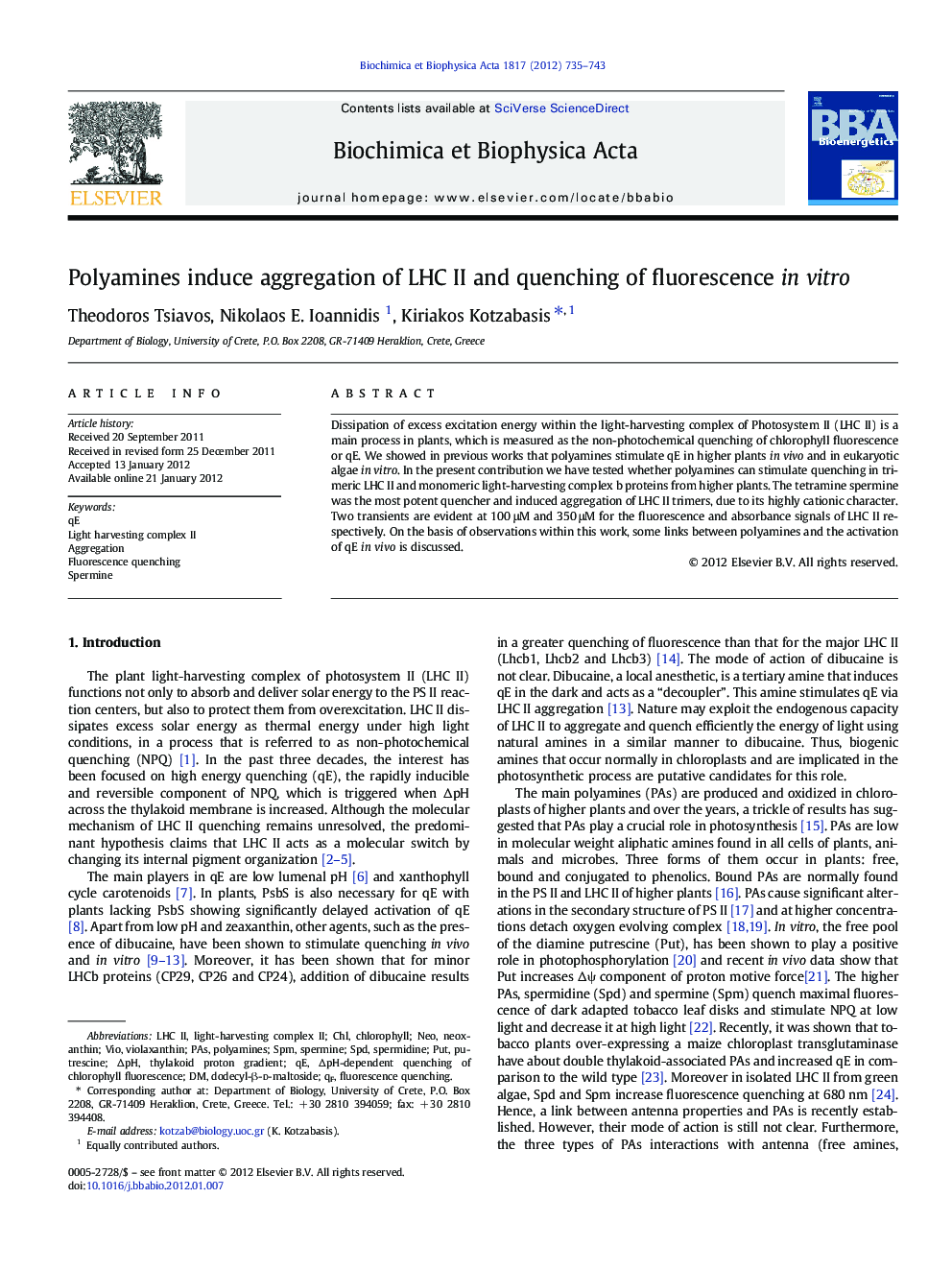| Article ID | Journal | Published Year | Pages | File Type |
|---|---|---|---|---|
| 1942457 | Biochimica et Biophysica Acta (BBA) - Bioenergetics | 2012 | 9 Pages |
Dissipation of excess excitation energy within the light-harvesting complex of Photosystem II (LHC II) is a main process in plants, which is measured as the non-photochemical quenching of chlorophyll fluorescence or qE. We showed in previous works that polyamines stimulate qE in higher plants in vivo and in eukaryotic algae in vitro. In the present contribution we have tested whether polyamines can stimulate quenching in trimeric LHC II and monomeric light-harvesting complex b proteins from higher plants. The tetramine spermine was the most potent quencher and induced aggregation of LHC II trimers, due to its highly cationic character. Two transients are evident at 100 μM and 350 μM for the fluorescence and absorbance signals of LHC II respectively. On the basis of observations within this work, some links between polyamines and the activation of qE in vivo is discussed.
► Polyamines quench Chl fluorescence in monomeric Lhcb proteins and trimeric LHC II. ► The relative rank of effectiveness is Spm > Spd > Put. ► Spermine induces aggregation of trimeric LHC II. ► Two transients are evident for the fluorescence and absorbance signals of LHC II.
